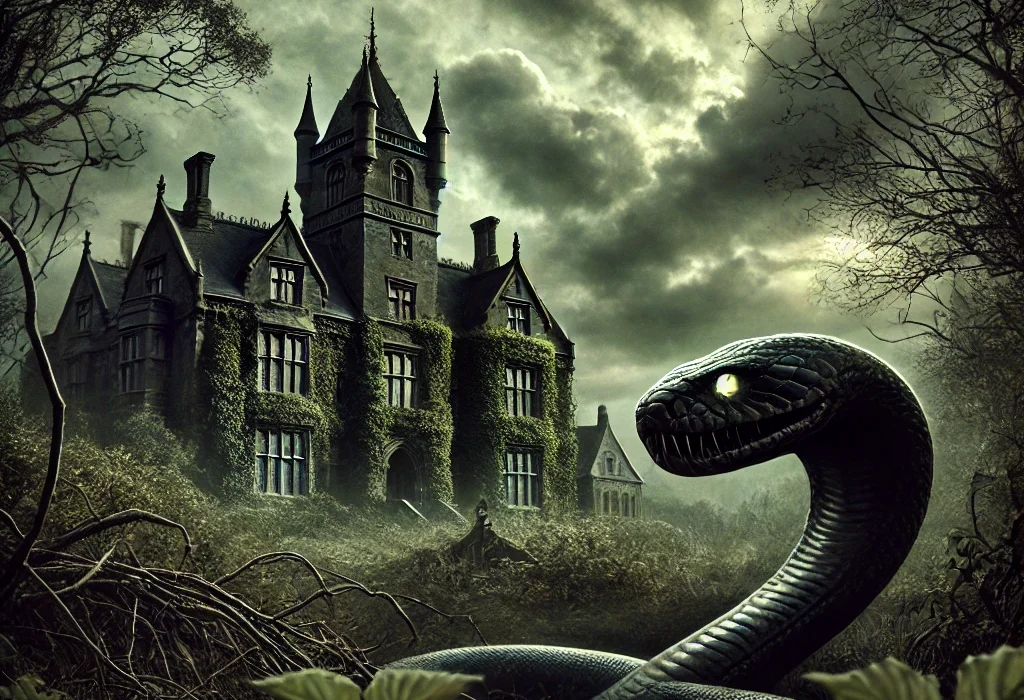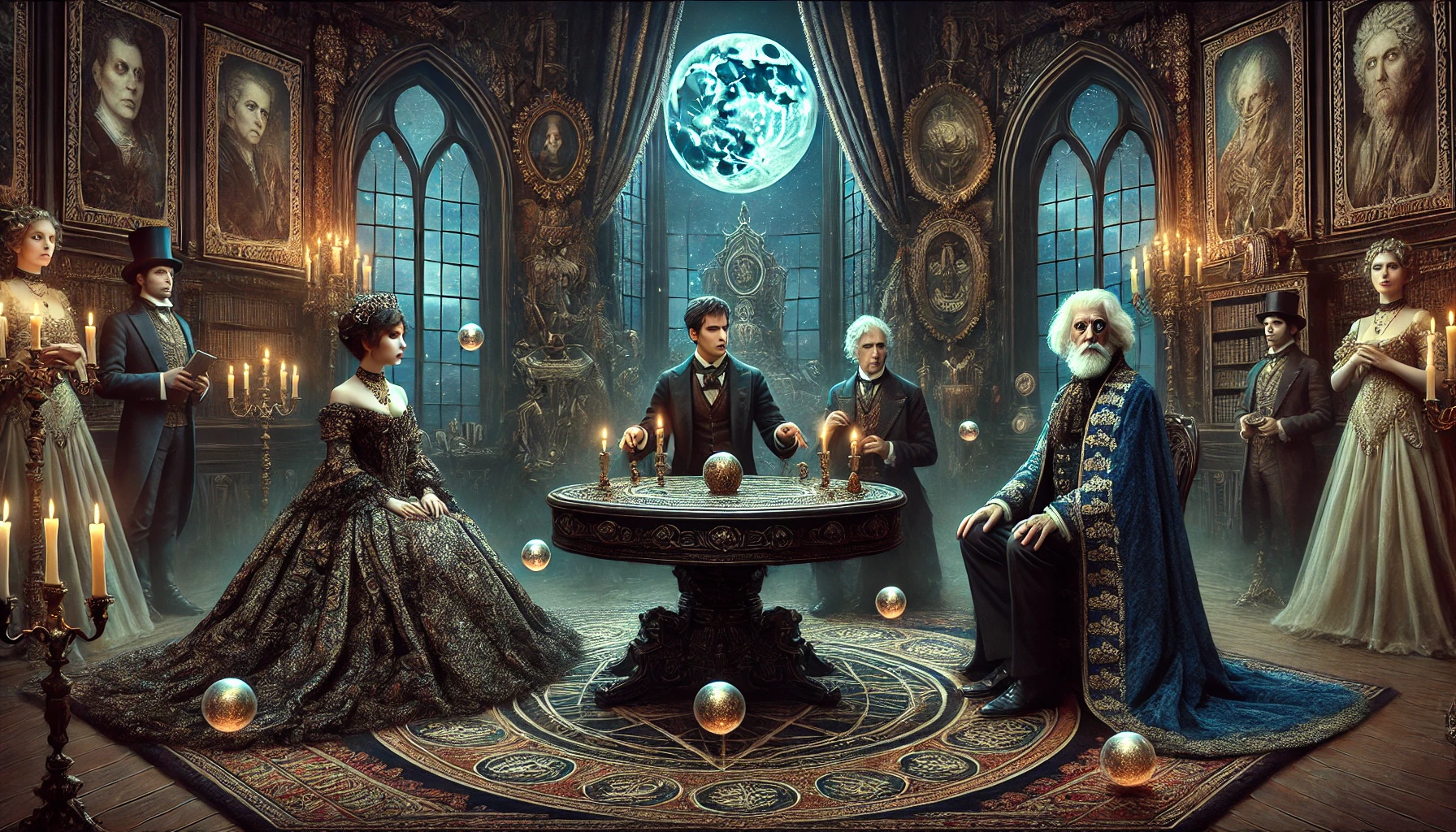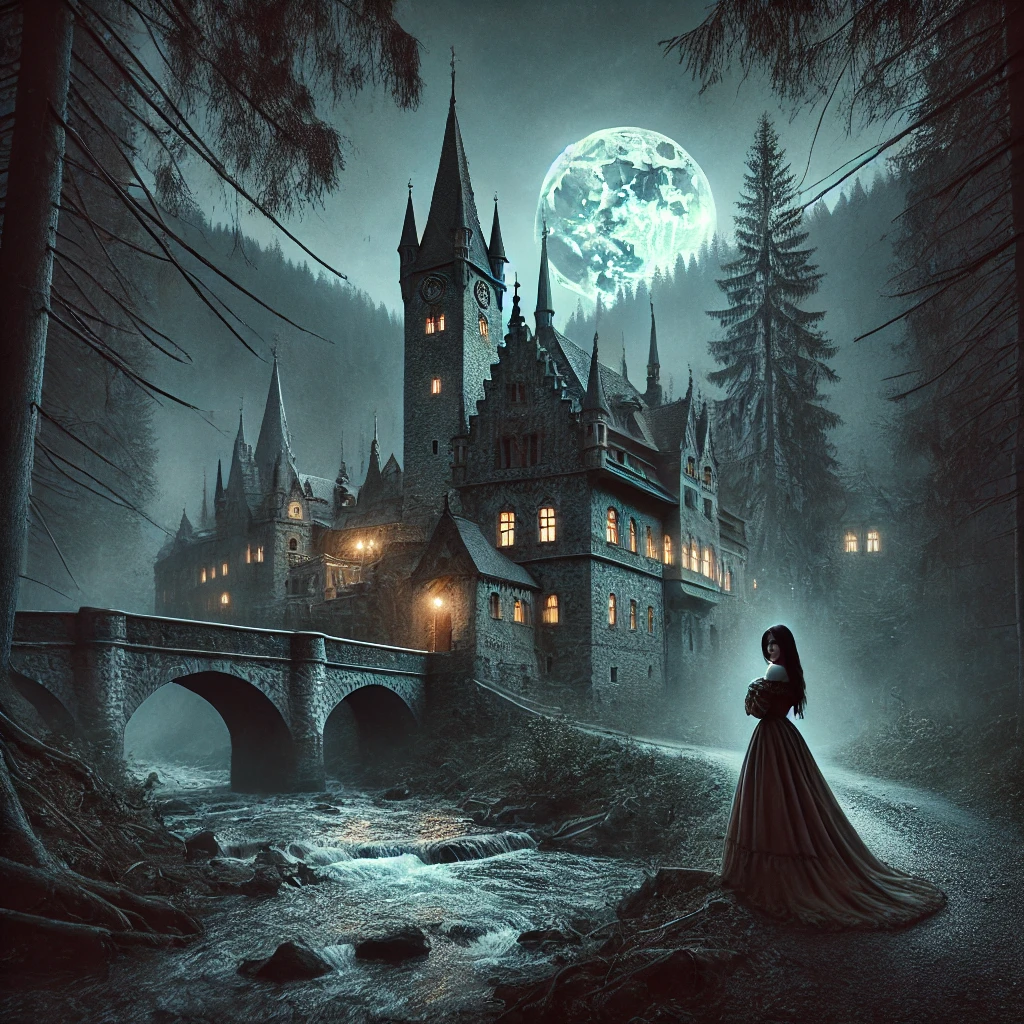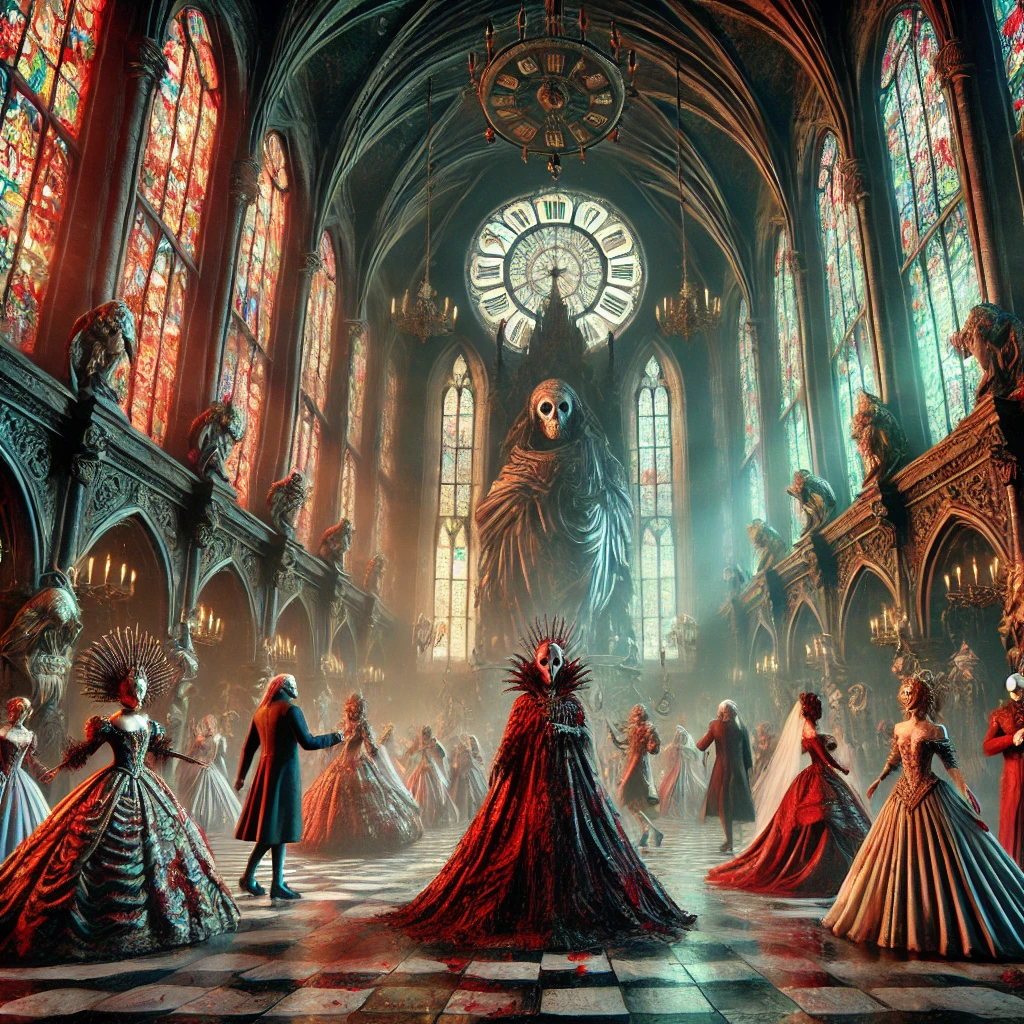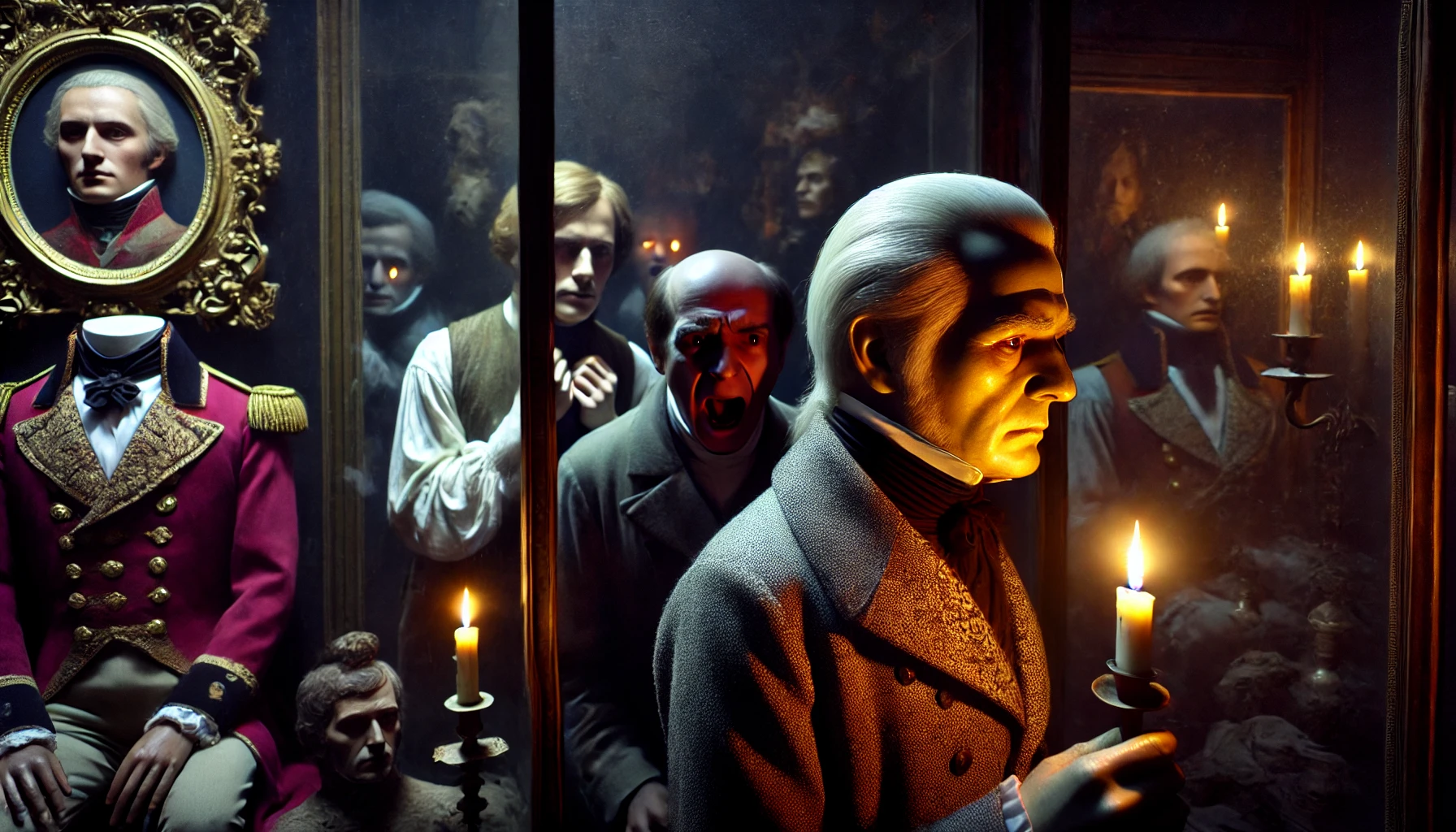“The Lair of the White Worm” is a horror novel written by Bram Stoker, published in 1911. Known primarily for his masterpiece “Dracula,” Stoker ventures into the dark recesses of English folklore and mythology with this novel. Set in the rural English countryside, the story revolves around ancient legends, serpentine horrors, and the uncanny abilities of certain individuals. The narrative unfolds with a sense of gothic eeriness, characteristic of Stoker’s writing style.
Plot Summary
Adam Salton, a young man from Australia, arrives in England to visit his grand-uncle, Richard Salton, at Lesser Hill. His uncle extends an invitation for Adam to stay indefinitely, hoping he will become the heir to the family estate. Adam is intrigued by the English countryside and the peculiar atmosphere surrounding it. Shortly after arriving, he becomes acquainted with Sir Nathaniel de Salis, a friend of his uncle’s, who has a keen interest in the history and legends of the area.
One such legend centers around Diana’s Grove, a nearby estate owned by the enigmatic Lady Arabella March. The area is shrouded in mystery and fear, as it is said to be the lair of an ancient and monstrous creature known as the White Worm, a giant serpent that has haunted the land for centuries. Lady Arabella herself is an unsettling figure, cold and remote, with an unnatural influence over those around her.
Adam also learns about Edgar Caswall, the new owner of Castra Regis, another estate in the vicinity. Caswall is a strange and domineering man, obsessed with mesmerism and the power it grants over others. He has recently returned to England after living abroad and shows a peculiar interest in the young Lilla Watford, a local girl of pure and gentle nature. Lilla lives with her grandfather, Michael Watford, and her cousin, Mimi Watford, at Mercy Farm. Mimi, in contrast to Lilla, is more assertive and fiercely protective of her cousin.
Caswall’s arrival in the area brings an unsettling energy. He installs a massive kite, resembling a hawk, on the grounds of Castra Regis, which he uses to practice his mesmeric experiments. The kite looms ominously over the landscape, symbolizing his desire to dominate and control. Caswall becomes fixated on Lilla and begins using his mesmeric powers to exert influence over her, much to the distress of Adam, who has grown fond of her and Mimi.
As Adam becomes more enmeshed in the local affairs, he uncovers more about the legend of the White Worm. Sir Nathaniel reveals that the creature is believed to be an ancient, evil entity that has existed for millennia, preying on the land and its people. Diana’s Grove, where Lady Arabella resides, is said to be the creature’s lair. The more Adam learns, the more he begins to suspect that Lady Arabella herself may be connected to the White Worm in some supernatural way.
Lady Arabella, on the other hand, has her own designs. She is aware of the legend and seems to have a peculiar control over the creatures of the grove, including snakes. Her motivations are ambiguous, but she clearly has an interest in Edgar Caswall and his wealth, seeing an opportunity for power and influence. She plays on his growing fascination with the occult and the darker side of mesmerism.
One day, while exploring Diana’s Grove, Adam encounters a large snake, which he narrowly escapes thanks to the intervention of his mongoose, a creature he keeps to combat the increasing number of serpents in the area. This encounter solidifies his belief that the legend of the White Worm has some basis in reality and that Lady Arabella may be at the heart of it.
The tension in the area continues to mount as Caswall intensifies his mesmeric attacks on Lilla. During one of his experiments, he hypnotizes a bird, drawing it toward him in a display of his growing power. However, Adam and Mimi witness the event and realize the danger Caswall poses. Mimi, in particular, feels an inherent need to protect Lilla from Caswall’s malign influence.
Lady Arabella, recognizing Caswall’s potential as a powerful ally or perhaps a victim to her own ends, begins to manipulate him, encouraging his obsession with Lilla while keeping him under her spell. Her ultimate goal remains obscure, but it is clear she seeks to harness the dark power that lies within Diana’s Grove for her own purposes.
As Adam, Sir Nathaniel, and Mimi band together to protect Lilla and uncover the truth, they delve deeper into the ancient secrets of the land. They suspect that Lady Arabella might be more than just a woman; she may be a manifestation or servant of the White Worm itself. This ancient evil is believed to be capable of taking on human form, and they fear that Lady Arabella might be its latest incarnation.
In a climactic confrontation, Adam and his allies prepare to destroy the lair of the White Worm. Using his knowledge of explosives, Adam sets charges around the grove, intending to obliterate the ancient evil once and for all. As the explosives detonate, the ground shakes, and the lair is engulfed in flames. In the chaos that ensues, Lady Arabella’s true nature is revealed. She transforms into a monstrous, snake-like creature before being consumed by the fire, finally destroying the ancient evil that has plagued the land for centuries.
With the destruction of the White Worm, the sinister influence over the land begins to dissipate. Caswall, deprived of the dark power he was under, falls into a state of catatonic shock, his mind broken by the horrors he has witnessed and participated in. Lilla is freed from his mesmeric control, and the region can begin to heal from the malevolent presence that has lingered for so long.
In the end, Adam, Lilla, and Mimi are left to pick up the pieces and move forward. The darkness that once threatened to consume them has been vanquished, but the scars it left behind serve as a reminder of the ancient, malevolent forces that lie dormant beneath the surface of the civilized world.
Main Characters
Adam Salton: The protagonist who returns to England at the behest of his grand-uncle, Richard Salton. A young man of intelligence and courage, Adam becomes entangled in the mysterious happenings around Lesser Hill and Diana’s Grove.
Richard Salton: Adam’s grand-uncle, who invites Adam to his estate in England. He is a kindly old gentleman who desires to reconnect with his family.
Sir Nathaniel de Salis: A friend of Richard Salton, knowledgeable in local history, folklore, and natural sciences. He acts as a guide and mentor to Adam, helping to unravel the dark mysteries of the region.
Lady Arabella March: The enigmatic and sinister owner of Diana’s Grove. She has a peculiar connection to the legends surrounding the White Worm and displays an unnatural influence over others.
Edgar Caswall: A wealthy and domineering landowner of Castra Regis, who harbors an unhealthy obsession with mesmerism and control. His fascination with Lilla Watford and his unsettling demeanor add to the tension of the story.
Lilla Watford: A young and innocent woman who becomes the focus of Caswall’s dark fascination. Her purity stands in stark contrast to the malevolent forces around her.
Mimi Watford: Lilla’s cousin, who is protective of her. She is more assertive and serves as a counterpart to Lilla’s gentleness.
Theme
Good vs. Evil: The novel explores the age-old conflict between good and evil, personified in the pure-hearted characters like Lilla Watford and the malevolent forces represented by Lady Arabella and Edgar Caswall.
Mesmerism and Control: Caswall’s obsession with mesmerism symbolizes the desire for power and control over others. This theme is a reflection of the fears surrounding manipulation and the loss of free will.
Ancient Legends and Supernatural Horror: The story draws heavily on ancient legends, particularly the concept of the White Worm, an enormous, mythical serpent. This motif ties into fears of the unknown and the primal terrors that lurk beneath the surface of civilized society.
Nature and the Supernatural: The rural setting, with its hills, caves, and ancient groves, serves as a backdrop for the supernatural elements in the novel. Nature is depicted as both a source of life and a harbor for ancient, dark forces.
Writing Style and Tone
Bram Stoker’s writing in “The Lair of the White Worm” is marked by a gothic tone that permeates the novel. His use of atmospheric descriptions creates a sense of foreboding and tension throughout the story. The rural English countryside is depicted with a dark, almost otherworldly quality, enhancing the horror elements of the narrative.
Stoker employs a narrative technique that combines straightforward storytelling with elements of the supernatural. His language is often formal and descriptive, capturing the peculiarities of each character and setting with meticulous detail. The dialogue is imbued with a sense of propriety typical of the early 20th century, yet it also serves to reveal the underlying anxieties and obsessions of the characters. The tone is consistently ominous, reflecting the clash between the ordinary and the extraordinary, the natural and the supernatural.
We hope this summary has sparked your interest and would appreciate you following Celsius 233 on social media:
There’s a treasure trove of other fascinating book summaries waiting for you. Check out our collection of stories that inspire, thrill, and provoke thought, just like this one by checking out the Book Shelf or the Library
Remember, while our summaries capture the essence, they can never replace the full experience of reading the book. If this summary intrigued you, consider diving into the complete story – buy the book and immerse yourself in the author’s original work.
If you want to request a book summary, click here.
When Saurabh is not working/watching football/reading books/traveling, you can reach him via Twitter/X, LinkedIn, or Threads
Restart reading!


